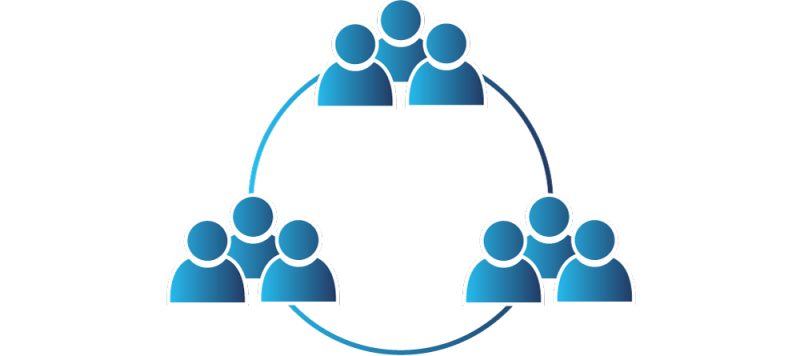All FTEs are not created equal

As outsourcing becomes more and more prevalent in drug discovery programmes, the standardised FTE (Full Time Equivalent) has become the global unit of measure. But, as Dr Paul Overton explains, all FTEs are not created equal. How do we avoid treating our FTEs like robots on a production line, and create genuine value from these relationships?
In recent years, there has been a growing reliance on outsourcing as a key pillar in the research and development of new pharmaceuticals.
Outsourcing strategies have matured, learning from other industry sectors to maximise the value that these service provider relationships provide. Professional procurement experts, working in synergy with the scientists, now routinely focus on the value of the supply chain, supplier segmentation and the three core building blocks of supplier management: price, quality and delivery1.
Outsourcing maturity and industry consolidation (around simplifying the value chain to increase customer value and reduce cost) has driven huge changes in the CMC, clinical, regulatory preclinical and discovery space. One critical piece of outsourcing strategy is the “unitisation” and “standardisation” of services to allow direct comparison of providers services.
Within the discovery, CMC and analytical space, the term FTE (Full Time Equivalent) has become almost a universal to support R&D service-related activities. Either directly or as a price build up, the FTE has become the standard unit of measurement.
Regular questions that often arise early in commercial discussions are around how much an FTE costs, how many hours per week they actively deliver, how many activities each can do per week, how many years of experience they have, etc. – seemingly standardising or commoditising the expertise of the scientists involved.
It conjures up images of rows of identical scientific robots in a warehouse (aka the movie I-Robot) just waiting to be utilised in each contract.
But, fortunately, most scientists are not faceless robots; they vary greatly in their experience, expertise, team interactivity and communication skills – and therefore the value they can bring to a drug discovery project. To make the most of outsourcing, the focus should be less on the top line cost per FTE, and more on the value those FTEs might create for you.
Defining FTE value
Just focusing on cost-per-FTE tips the cost-value equation in the wrong direction, and underplays the potential value creation opportunity for the pharma company. According to value experts Neil Rackham, Malcolm MacDonald, Philip Kotler2 and others, there is a simple definition of value:
Value equals benefits minus cost: V=B-C
If you follow the logic of that equation, then value creation must focus on the benefits rather than the basic costs.
However, many commercial conversations around FTE rates inevitably focus on the delivery from the given scientist or team of scientists. Classic scorecards and metrics around number of cycles of “design, make, test”, number of compounds produced, number of samples screened, batches performed, failure rates, etc. These are all great to assess the performance of given activities and discuss when things do not go to plan, but there is another way.
Models utilising FTEs
Let’s take a step back and focus on the way an FTE team can be utilised. There are potentially several options, depending largely on IP considerations and your internal resourcing needs:
1. Fully directed FTE:

In this type of agreement, a dedicated team of FTE scientists who are typically discipline focussed (Med Chem, Biologists, DMPK scientists, etc) are given clear, regular instructions on methods or protocols to follow.
With this approach, effectively all the intellectual value remains with the pharma or biotech company. The FTE team add little to no scientific value or innovation to the project other than capable “pairs of hands” to perform the task in hand (e.g. make some specified molecules or screen the compounds as requested).
This approach requires strong project management, strong data interpretation, and good communication to ensure the instructions are followed. Effectively, it doesn’t matter where those pairs of hands are located, whether it’s Europe, the USA or Asia.
This FTE model, however, fails to utilise the potential expertise of the team, and can often cost more than initially budgeted. The FTE “cost” may initially be attractively low, but the TCS (Total Cost of Service) may be significantly higher when active management time and support costs such as re-chargeables, travel and shipping are all wrapped in.
2. FTEs as part of your research team:
 In this approach, the FTEs are not just pairs of hands performing activities; they also act as part of your research team, directly inputting their expertise and knowledge. They add intellectual input and innovation into the delivery of the project.
In this approach, the FTEs are not just pairs of hands performing activities; they also act as part of your research team, directly inputting their expertise and knowledge. They add intellectual input and innovation into the delivery of the project.
The scorecards and metrics are still key to managing the project, but typically there would be a team leader providing updates and data interpretation of the recent work performed.
The FTE robots are effectively becoming humanised.
3. Multi-disciplinary FTE teams:
 In this agreement, the FTE team is a multi-disciplinary group with an internal project lead, and typically clear joint governance, that act and perform as part of your own team. They impart ideas into the greater team, and their proximity to each other sparks innovation and new ways of thinking.
In this agreement, the FTE team is a multi-disciplinary group with an internal project lead, and typically clear joint governance, that act and perform as part of your own team. They impart ideas into the greater team, and their proximity to each other sparks innovation and new ways of thinking.
This “group ideas” thinking is sometimes called serendipity knowledge exchange, but in practice it creates value beyond just the individual. The focus on a team approach with real intellectual input moves us away from the classic metrics and scorecards, and towards a model based upon joint aims and milestones. And ultimately, hopefully, towards molecules that show efficacy, good safety, and appropriate DMPK profiles.
The team can also potentially be independent advisors that can highlight and advise on project termination if the science does not support the overall project aims.
The FTE robots have become partners in the project. They are invested.
Creating genuine value
Having spent time on both sides of this equation, I am a firm believer that all FTEs are not created equal. As with any relationship, you need to look at value creation – not just cost.
As MacDevitt and Wilkinson3 highlighted value can be thought of as a triad:
- Revenue gains (Asset success)
- Cost reductions (Total Cost of Ownership)
- Emotional contribution (Feel good factor)
All these are important in outsourcing to the right provider.
There is a real difference between a unitised, commoditised service and an innovative partner-type arrangement. What value will it add beyond simply the discipline services you buy? Will the FTE become, essentially, part of the team, working to push the project forward in a more substantial way than simply making molecules?
Extending the partnership into a multi-disciplinary arrangement can add even more value, with biologists and analytical scientists all working together to create it. The total cost–value proposition of such a partnership will be more difficult to quantify, of course. It goes beyond simple KPIs and metrics, which classically omit the value created by the outsourced team’s expertise.
A hundred chemicals delivered may tick a lot of KPI boxes for an outsourcing contract, but if they are all poor quality, they simply represent a lot of wasted effort. You would be far better off if the project only delivered a handful of molecules with drug-like properties. And engaging FTEs who are experienced drug-hunters, not just good synthetic chemists, will make this far more likely.
So let’s humanise our FTEs.
We continually engage with our industry on a range of drug discovery topics. If would like to discuss your DMPK needs, our capabilities or even drug discovery in general then we’d love to hear from you. You can get in touch by using any of the contact forms.
Supporting References:
